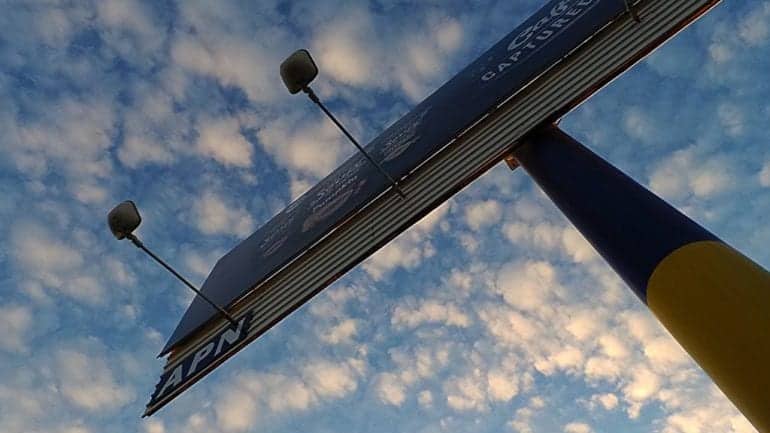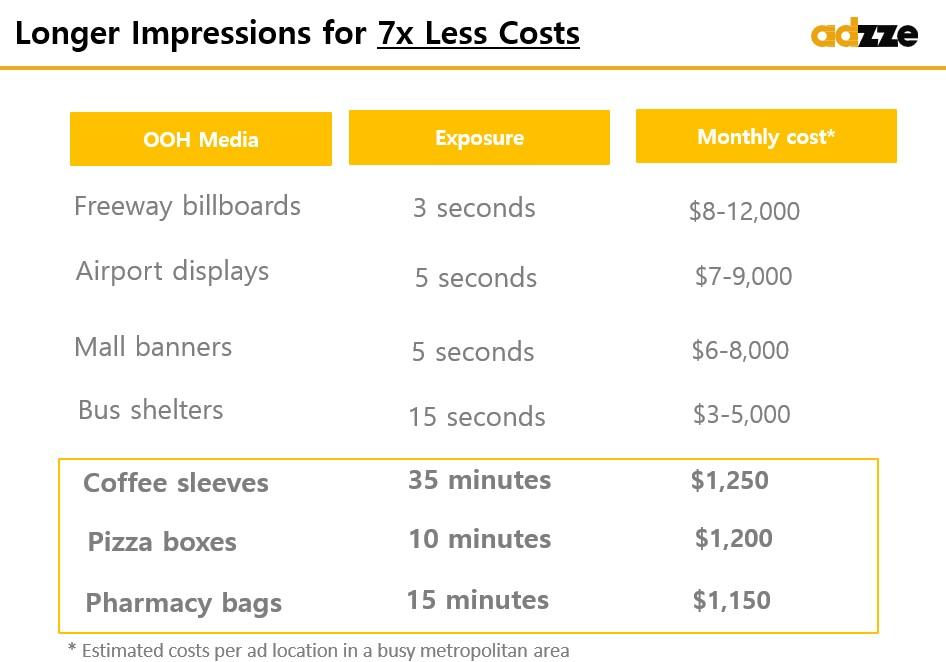Billboard Ads Cost
Understanding Billboard Advertising Costs Across Different States in the U.S.
Billboard advertising remains one of the most effective forms of out-of-home (OOH) advertising for reaching a wide audience. However, the cost of billboard advertising can vary significantly depending on the location, with factors such as traffic volume, population density, and local demand impacting pricing. In this blog, we’ll explore how billboard advertising costs differ across various states in the U.S., highlighting both high-cost and more affordable regions.
California: High Demand, High Costs
California is known for its high advertising costs, especially in urban centers like Los Angeles and San Francisco. These cities are densely populated, and traffic congestion ensures extended exposure for billboards, making them highly sought-after.
• Average Cost: Billboard costs in Los Angeles range between $10,000 to $30,000 per month for prime locations. In comparison, billboards in smaller California cities may start at $3,000 to $5,000 per month(
• Why It’s Expensive: High traffic, frequent foot traffic in areas like Hollywood or Sunset Boulevard, and significant competition from major brands drive up the price in these locations.
New York: Premium Pricing for Urban Exposure
New York, especially New York City, is one of the most expensive markets for billboard advertising. The iconic Times Square is known for its high-visibility, digital billboards, but this visibility comes at a premium.
• Average Cost: A billboard in Times Square can cost between $30,000 to $50,000 per month, with digital displays reaching $1 million annually. In contrast, billboard ads in upstate New York or suburban areas like Long Island or Westchester are significantly cheaper, averaging $5,000 to $10,000 per month.
• Why It’s Expensive: Times Square is one of the busiest pedestrian areas in the world, and advertisers compete for the chance to display their ads to millions of tourists and residents every day.
Texas: Diverse Pricing Based on City Size
Texas offers a diverse range of billboard advertising costs, depending on the city. Houston, Dallas, and Austin are major metropolitan hubs where billboard demand is high.
• Average Cost: In Houston, the average monthly cost for a billboard is between $2,000 to $15,000, depending on location. Smaller cities like San Antonio or El Paso can see rates closer to $1,500 to $5,000 per month.
• Why It’s Affordable in Some Areas: The large size of the state means less competition in some regions, but highly populated areas like Dallas still command higher prices due to the local demand and traffic density.
Florida: A Mixed Range
Florida’s billboard costs vary greatly, with major cities like Miami, Orlando, and Tampa seeing higher prices, while smaller cities and rural areas offer more budget-friendly options.
• Average Cost: In Miami, billboards cost between $5,000 to $20,000 per month, especially near tourist-heavy areas like South Beach. Meanwhile, in smaller cities or along highways, prices can drop to $1,500 to $4,000 per month(
• Why It’s Mixed: Tourist activity in Miami and Orlando drives up prices, but less populated areas along the I-95 corridor or near smaller towns are more affordable.
Location influences billboard ads cost
Indeed, getting your ad on a billboard in prime locations like Times Square costs a fortune. This is because of the high impression rates the billboard generates. It is not just Times Square but many other regions charge exorbitantly for billboard advertising. This article explores the reasons why billboard ads cost too much. For starters, advertising agencies price billboards based on a range of factors including circulation. Simply, circulation refers to the amount of traffic that passes by the billboard. Mostly, this metric applies to billboards located by the roadside. Usually, billboards found on busy highways that experience long traffic jams cost more.
Billboards are expensive to make. In particular, ad agencies have to pay for construction and space on which the billboard stands. Additionally, the agency’s creative team requires compensation for the beautiful graphic it produces. All these costs put together make billboards advertising an expensive endeavor for businesses.
Billboards in big cities like New York are very expensive. For example, a single billboard in Times Square could cost you to the upwards of $50,000 per campaign. Indeed, this is not affordable for many businesses.
Effective media should enable a clear way to track number of impressions. Traditional OOH advertising as billboards display lack of targeting and tracking possibilities. The fact that many highway drivers cannot focus on the ad message generates a low engagement with the target audience. The costs of billboards depend on format, circulation, demographics, and impressions. Traditional billboards have high costs, low ROI cost varies $14,000-20,000/month in larger markets. Some cities imposed a ban of billboards due to visual pollution. Unconventional agencies provide alternatives to the targeting issues with approaches as mobile billboards, digital OOH, ads on trucks and other ads in places people don’t expect to see as flags, backpacks, inflatable objects, gas pump, and balloons.
Billboard are overrated
The advertising industry is dynamic and major changes happen at a moment’s notice. For example, Netflix acquired over 18 billboards on Sunset Strip in West Hollywood in October 2018. All of a sudden, the shortage of billboards quickly led to an uptick of the cost of billboards. Notably, the price went up because many more businesses had to jostle for the few billboards left.
Billboard advertising has undergone a slew of developments but the invention of digital billboards remains the highlight. In particular, digital billboards enable advertisers to use animated content to market their brands. However, this new development is coming at a cost to marketers.
The after-effect of this development will, of course, be an unavoidable reduction in patronage for the outdoor advertising companies. These media companies may count their losses for months after. Billboard companies will eventually have to sit it out with the hope that they can still reclaim their market share in the end. However, smaller businesses and other brands that depend on their strategic displays to market their brands may not be so patient. Just as major clients like hoteliers, airlines, and cinemas are on pause mode, smaller brands are quickly pulling away and leveraging alternative media and in-home advertising to preach their brands.
Billboard Costs and the Paradigm Change
A noticeable new normal in consumer behavior is the increased demand for food delivery services. According to NPD, 48.5% of all restaurant spending was for off-premise orders in the past 12 months and this is expected to accelerate during the lockdown. Although the government has clamped down on restaurants across Illinois, Ohio, and New York City in a bid to enforce social distancing, many consumers are turning to restaurant delivery as an alternative solution. Meanwhile, these restaurants are waiving delivery fees and commissions to keep the orders coming in. This trend presents a beautiful opportunity for new advertising trends to fill the widening value gap in the ad industry. Ads can now be boldly placed on pizza boxes and grocery shopping bags – a model that generates guaranteed impressions.
Choosing the Right State for Billboard Advertising
The cost of billboard advertising varies greatly depending on the state, with factors like population density, traffic congestion, and local demand playing a significant role in pricing. Major metropolitan areas such as New York, California, and Florida are known for their high costs, while more rural states like Alaska and regions in Texas and North Carolina offer more budget-friendly options.
When planning your billboard advertising campaign, consider not only the cost but also the target audience and potential impressions. High-traffic areas may come with a premium price, but they also offer increased visibility and brand recognition, making them a worthwhile investment for many businesses.
By understanding the geographic variations in billboard costs, you can optimize your advertising budget and achieve the greatest return on investment for your OOH campaigns.
Fortunately, Adzze’s new-age marketing strategies offer innovative ways to navigate the storm and help brands remain in business. Unique advertisement ideas have surfaced across the landscape; these strategies include placing ads pizza boxes and door handles that can reach the consumers at their homes. As simple as they sound, they generate guaranteed impressions delivering the ads at consumer’s homes.
The next stage is delivery. Proper delivery of the door hangers is critical. If your business covers a small geographical area, you can deliver the door hangers yourself. Specifically, this is important because you need to make the best first impression. If you have to hire a delivery team, ensure they undergo intense training. Simple as it may appear, door hanger advertising requires adherence to the highest standards of professionalism.







